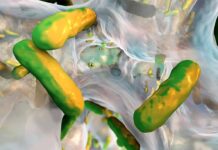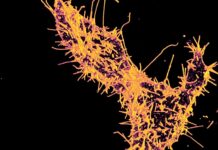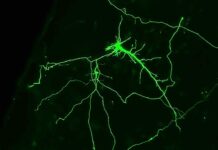Unraveling the Enigmatic Study
Published in the prestigious journal Science, an intriguing investigation spearheaded by a cadre of adept researchers delves into the resurrection of ancestral Rubisco sequences. Their meticulous lab experiments elucidate the performance of these primordial enzymes. Astonishingly, the team has unearthed that the minuscule accessory subunit significantly bolsters the carbon-fixing enzyme’s catalytic prowess and its penchant for CO2 specificity.
Decoding Rubisco’s Pivotal Function
Behold the cornerstone enzyme of photosynthetic organisms: Rubisco. Its indispensable role is to capture carbon from the environment, which is integral to the life-sustaining process of photosynthesis. Among the four forms known today, Form I – found in cyanobacteria, specific algae, and plants – exhibits the most exceptional CO2 specificity and catalytic efficiency.
Resuscitating Long-Forgotten Rubiscos
To scrutinize the small subunit’s influence on Rubisco’s performance, researchers meticulously reconstructed the phylogenies of both the colossal and minuscule subunits. Synthesizing ancestral Rubisco sequences, they subsequently gauged their activity within the controlled confines of a laboratory. Remarkably, the team engineered a Rubisco progenitor that could bind the small subunit, albeit without depending on it.
Discoveries Unveiled by the Research Team
The researchers’ findings were nothing short of astonishing. The AncLS+AncSSU complex boasted superior catalytic efficiency and CO2 specificity compared to AncL alone. Even more intriguingly, introducing a single substitution to AncL+7 amplified the specificity, nearly doubling that of AncL – but only in the presence of the small subunit.
Peering into Evolution’s Mysteries
Undoubtedly, Rubisco emerged before the momentous Great Oxidation Event. However, the precise origins of the high-specificity Form I Rubisco remain shrouded in uncertainty. The researchers’ hypothesis – that the small subunit’s interaction and dependence may predate Earth’s global oxygen surge – ignites a fascinating debate.
Far-Reaching Implications of the Enzyme Enigma
This groundbreaking study sheds light on Rubisco’s inner workings and evolutionary trajectory. As Rubisco is the linchpin of global photosynthesis and carbon cycling, comprehending its evolution carries profound significance.
Moreover, the researchers’ discoveries hold the tantalizing promise of boosting crop yields through practical applications. Wild Bioscience, a trailblazing company with aspirations of enhancing photosynthesis and crop yields, was co-founded by a plant scientist at the University of Oxford – unaffiliated with the study – who specializes in the evolution of photosynthesis.
In conclusion, this study’s pioneering approach of resurrecting ancient proteins and reassembling ancestral sequences has granted invaluable insights into the enigmatic Rubisco. The potential ramifications of this knowledge – both for understanding global carbon cycling and for augmenting crop yields – cannot be overstated.
Google News | Telegram
















